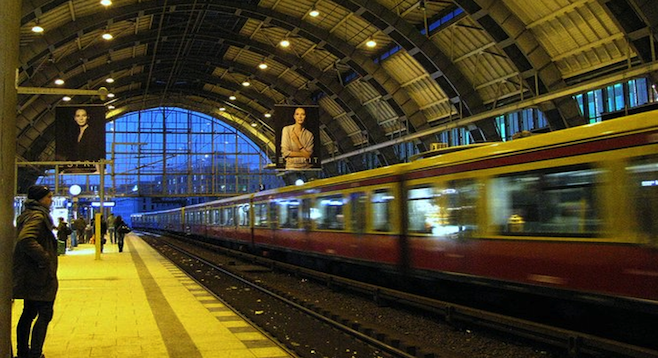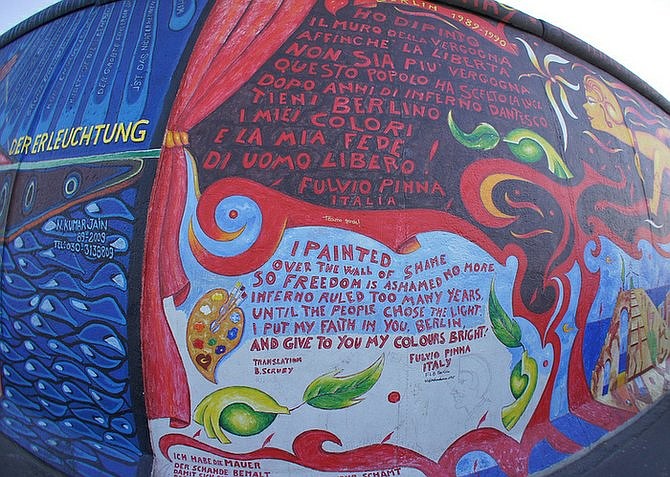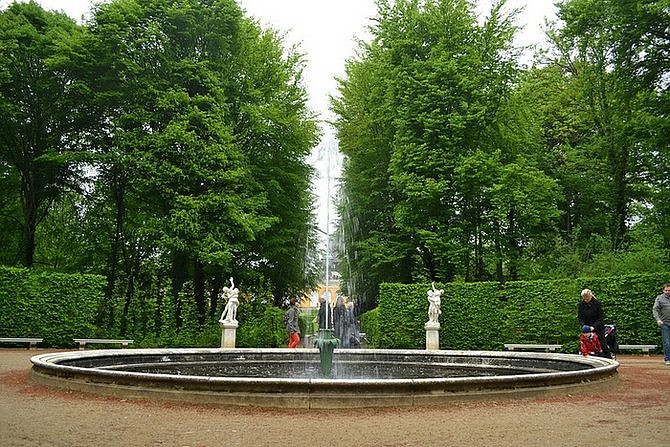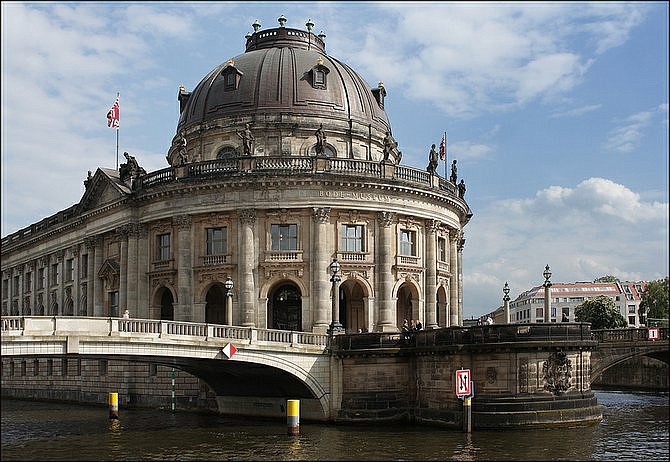 Facebook
Facebook
 X
X
 Instagram
Instagram
 TikTok
TikTok
 Youtube
Youtube

I knew Berlin was a big city, but I never knew how big until I explored it on foot. I had seven days to see the major and not-so-major sites.

Since the fall of its world-famous wall, Berlin has become one of the most stimulating cultural centers in Europe. It is a city of many faces – a wealth of green spaces for outdoor activities, a museum and history buff’s dream, hedonistic parties lasting days instead of hours.
You can take a free 3½-hour walking tour through New Europe to see all the highlights and orient yourself. Berlin's too overwhelming to spend less than a week seeing the major sites, much less most of the city.
Berlin is a great city for biking, and bikes cost less than 10 euros a day to rent. The majority of streets have separate cyclist lanes so you’re less fearful about getting smacked by a car. Most Berliners bike around the city; at first I was somewhat nervous about using this mode of transportation, but by the end of the day I was really enjoying it as an efficient way to explore the area. Plan to visit the city area by area, and you’ll see much more, especially if you have limited time.

The infamous Berlin Wall has a giant section still standing where artists have painted scenes of hope and violence. The East Side Gallery has one of the best outdoor art exhibits in the area. The Holocaust Museum (called The Memorial to the Murdered Jews of Europe) portrays the treatment of Jews during the Nazi regime.
Berlin’s central park is the place to go to see one of the most beautiful city parks in Europe with a war memorial to Russian soldiers and the German parliament and Brandenburg Gate. There are many museums throughout the city documenting the history of the Nazi regime in Berlin.

If you plan to visit many cultural attractions, buy the Museum Pass Berlin, which grants you free entry to almost 50 museums in the area – and you’ll bypass ticket lines. It's valid for three consecutive days and most museums are closed on Monday so plan your visit to avoid that day. Another useful option is the Berlin Welcomecard which gives you free public transportation, a pocket map and 50% of admission to places not included in the Museum Pass Berlin. Every Thursday evening Berlin’s museums offer free entrance four hours before closing time and many museums have extended hours until 10:00pm to accommodate museumgoers.
You’ll discover that food in Berlin is incredibly cheap, and it’s not just street food. Even many area restaurants are a bargain with meals for less than 5 euros. You can find every type of food, from pizzas to kebabs to currywurst. One of the best places is Mustafas with their mouthwatering kebabs and fresh vegetables. Or to save even more money, you can eat pretzels every day; they're cheap and filling.
The Odyssee Hostel (formerly Globetrotter Hostel) offers inexpensive dorms and private rooms near the trendy Friedrichshain area that appeal to the backpacker crowd. No two rooms at the Odyssee are alike. Some are less appealing than others, although all have clean shared bathrooms. There's a large shared kitchen, nearby cheap eating and drinking places, and free WiFi in public areas. Breakfast is an additional charge.
The 3-star Hotel Friedrichshain “Home Away From Home” has seen better days, but it's a cheap clean place to stay in the trendy Friedrichshain location. All rooms have TV and desk with shared or private bathrooms and free WiFi. Breakfast is an additional charge.
Summer is by far the best season to visit Berlin when everyone is outdoors, although the low season (late October to February, when the weather is less predictable) would be a good time for a budget traveler who plans to spend most of their time indoors in the museums. The shoulder season when prices are mid-range is March to May and September to mid-October.


I knew Berlin was a big city, but I never knew how big until I explored it on foot. I had seven days to see the major and not-so-major sites.

Since the fall of its world-famous wall, Berlin has become one of the most stimulating cultural centers in Europe. It is a city of many faces – a wealth of green spaces for outdoor activities, a museum and history buff’s dream, hedonistic parties lasting days instead of hours.
You can take a free 3½-hour walking tour through New Europe to see all the highlights and orient yourself. Berlin's too overwhelming to spend less than a week seeing the major sites, much less most of the city.
Berlin is a great city for biking, and bikes cost less than 10 euros a day to rent. The majority of streets have separate cyclist lanes so you’re less fearful about getting smacked by a car. Most Berliners bike around the city; at first I was somewhat nervous about using this mode of transportation, but by the end of the day I was really enjoying it as an efficient way to explore the area. Plan to visit the city area by area, and you’ll see much more, especially if you have limited time.

The infamous Berlin Wall has a giant section still standing where artists have painted scenes of hope and violence. The East Side Gallery has one of the best outdoor art exhibits in the area. The Holocaust Museum (called The Memorial to the Murdered Jews of Europe) portrays the treatment of Jews during the Nazi regime.
Berlin’s central park is the place to go to see one of the most beautiful city parks in Europe with a war memorial to Russian soldiers and the German parliament and Brandenburg Gate. There are many museums throughout the city documenting the history of the Nazi regime in Berlin.

If you plan to visit many cultural attractions, buy the Museum Pass Berlin, which grants you free entry to almost 50 museums in the area – and you’ll bypass ticket lines. It's valid for three consecutive days and most museums are closed on Monday so plan your visit to avoid that day. Another useful option is the Berlin Welcomecard which gives you free public transportation, a pocket map and 50% of admission to places not included in the Museum Pass Berlin. Every Thursday evening Berlin’s museums offer free entrance four hours before closing time and many museums have extended hours until 10:00pm to accommodate museumgoers.
You’ll discover that food in Berlin is incredibly cheap, and it’s not just street food. Even many area restaurants are a bargain with meals for less than 5 euros. You can find every type of food, from pizzas to kebabs to currywurst. One of the best places is Mustafas with their mouthwatering kebabs and fresh vegetables. Or to save even more money, you can eat pretzels every day; they're cheap and filling.
The Odyssee Hostel (formerly Globetrotter Hostel) offers inexpensive dorms and private rooms near the trendy Friedrichshain area that appeal to the backpacker crowd. No two rooms at the Odyssee are alike. Some are less appealing than others, although all have clean shared bathrooms. There's a large shared kitchen, nearby cheap eating and drinking places, and free WiFi in public areas. Breakfast is an additional charge.
The 3-star Hotel Friedrichshain “Home Away From Home” has seen better days, but it's a cheap clean place to stay in the trendy Friedrichshain location. All rooms have TV and desk with shared or private bathrooms and free WiFi. Breakfast is an additional charge.
Summer is by far the best season to visit Berlin when everyone is outdoors, although the low season (late October to February, when the weather is less predictable) would be a good time for a budget traveler who plans to spend most of their time indoors in the museums. The shoulder season when prices are mid-range is March to May and September to mid-October.
Comments